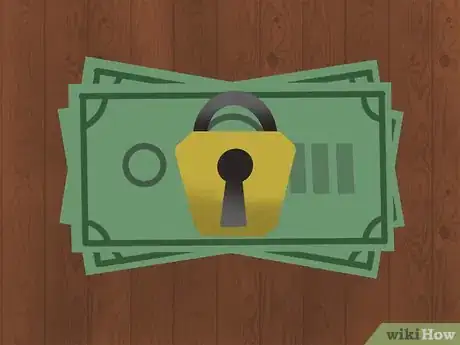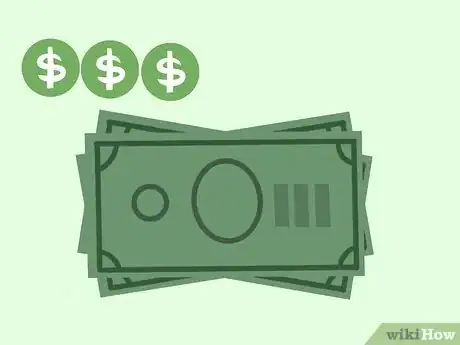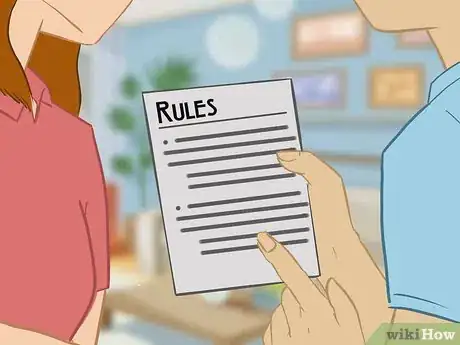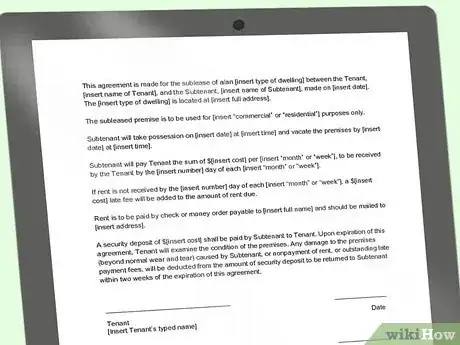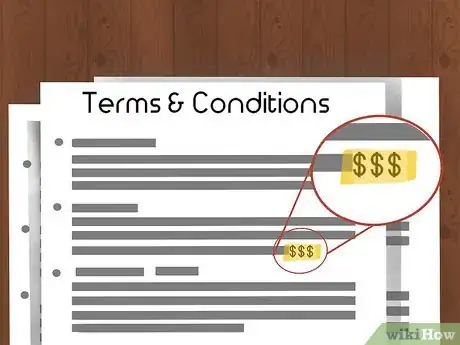This article was co-authored by Nathan Miller. Nathan Miller is an entrepreneur, landlord, and real estate investor. In 2009, he founded Rentec Direct, a cloud-based property management company. Today, Rentec Direct works with over 16,000 landlords and property managers across the United States, helping them manage their rentals efficiently.
This article has been viewed 149,568 times.
Are you heading home for the summer from college? Relocating temporarily for work? Moving into a new place before your current lease expires? If so, subletting (also called subleasing) your apartment can be a good way to keep a few extra dollars in your pocket. It can also be a recipe for disaster, however, if you do not consider subtenants carefully and abide by the particulars of your lease and legal codes where you live. Use the following article as a guide to picking the right sublessee, keeping your landlord happy, and drawing up an effective sublease contract.
Steps
Finding the Right Subtenant
-
1Discuss your interest in subletting with your landlord. Depending upon the laws where you live, your landlord can almost certainly veto your chosen subtenant (with reasonable cause). He/she may also be able to make additional restrictions or perhaps deny your request altogether.
- Your best bet for making it an agreeable process for all is to inform and even involve your landlord from the start. Explain why you want to sublet, for how long, and what you will look for in a sublessee.
- You may even want to consult your landlord for advice on picking a good tenant, or ask if he/she knows of any good prospects.[1]
- If your landlord is not on board with the idea, be prepared by brushing up on your tenant rights in your jurisdiction.
-
2Take the process of selecting a subtenant seriously. You may be itching to get things taken care of so you can head out knowing you won’t be paying full rent for an empty apartment. But this is a situation where it pays to do things right, and could easily cost you a good deal if you don’t.
- Think of yourself as a landlord (or “sublandlord”). Your money is on the line based upon the person you choose to occupy the apartment, so do your due diligence in the selection process.
Advertisement -
3Advertise your sublease. Unless you have a subtenant lined up ahead of time, you’ll need to spread the word. Choosing the right channels can help ensure that you find the right candidate.
- Placing ads in the local newspaper may seem old-fashioned but can still be a viable option, especially when combined with a presence on the paper’s website.
- Popular social media, peer-to-peer transaction, and sublease-specific sites can be effective avenues, especially when seeking a younger clientele. Refer to this linked wikiHow article for some location-specific yet generally-useful tips.
- In college towns, the school’s housing office may be able to provide information and assistance.[2] Putting up fliers in strategic spots around campus can still work as well.
-
4Involve any roommates in the process. As long as you’re on the lease, a roommate cannot really prevent you from subletting your share of the apartment, but he or she can sure make it a miserable and possibly costly process.
- If you don’t want to go as far as letting them approve of the sublet or the candidate, at least make them feel heard and involved in the process.
- They may have good leads on prospective candidates as well, so ask.[3]
-
5Vet your prospective subletters carefully. Don’t be over-anxious and blindly accept the first person who shows interest. Think about the apartment as your place, which it is to a certain limited extent, and consider whether this is the type of person you want to live in your place.
- Your landlord likely required some combination of a credit check, questionnaire on your finances, references, and perhaps even a full background check. It may seem like overkill to take these steps for a sublet, but they certainly can help weed out problematic prospects.[4]
- Even if the potential sublessee is an acquaintance, risk a bit of awkwardness and request important background information as you would a stranger. Akin to borrowing money from friends or family, keeping the process at a “strictly business” level will probably pay off.
- If you want to have a full background check done, you should probably offer to pay for it. You might want to ask your landlord for advice on the process as well, as he/she likely has ample experience.
-
6Conduct an interview and walk-through. Reading reports and questionnaires is no substitute for meeting someone in person and judging his/her suitability as a sublessee. Doing so in combination with a walk-through of the apartment is a sensible way to make sure that tenant, subtenant, and apartment are all a good fit.
- You can keep the interview more informal if desired, but still find ways to ask questions like: Why are you seeking a temporary living space? What kind of job do you have, and how much income do you take in? Do you have a significant other, kids, or pets that would be in the apartment regularly? Do you like to host parties or other gatherings?[5]
- During the walk-through, be specific on the condition of the apartment, and especially possible problem areas. As a lessee, you will be ultimately responsible for damage done by your sublessee, so take pictures and be clear that you expect the apartment to remain in the same condition as you will leave it.[6]
Working Out the Details
-
1Determine your subleasing rights. Depending upon where you live, details such as your landlord’s ability to veto a sublet and the amount you are permitted to charge can vary. Consult the legal particulars in your jurisdiction before moving forward.
- Generally speaking, in the U.S. your landlord cannot deny you the ability to sublet, but can reject a sublessee for reasonable cause. For instance, joblessness would be a reasonable criteria, while skin color would be unreasonable.
- Regardless of where you live, it is safe to assume that you will need your landlord’s written consent in order to legally sublet your apartment. Skipping this step may put you at risk for eviction.
- Please note: the steps in this section build off of How to Write a Sublease Contract, which is highly recommended for both legal and practical advice.
-
2Consider a security deposit.[7] Your landlord almost certainly had you provide one when you signed the lease for the apartment, in order to cover the cost of any damage or unpaid rent you might leave behind. Think about doing the same as a “sublandlord.”
- Remember that, as the lessee, you will be ultimately responsible for damages or unpaid rent by your sublessee, so requiring a security deposit provides you with some insurance.
- Your ability to collect a security deposit from a sublessee can vary depending upon where you live, as can the amount you can require and whether you or the landlord can hold the money. Again, it is wise to consult the laws for renters in your jurisdiction.
-
3Figure out how rent and other bills will be paid. Ideally, you will be able to find someone who will pay you the same amount you pay in rent. (Be warned that charging a subletter more than the rent you pay is usually illegal, depending on where you live.) In reality, you can probably hope for 75%-80% of what you pay if the apartment is unfurnished, a bit more if furnished.[8]
- The monthly rent to be paid is a negotiation between you and the sublessee, just as the rent you pay was a negotiation between you and the landlord.
- You will have to decide whether you want the subtenant to pay you directly while you continue to pay the full monthly rent to the landlord, or have the subtenant pay the landlord directly while you cover any remaining amount (if the subtenant is paying below 100%). Remember that you are ultimately responsible for unpaid rents to the landlord, so consider your options carefully.
- Don’t forget about utilities as well. For a short-term sublease, you probably won’t go through the trouble of switching over the utilities to the subtenant’s name, so the responsibility for paying utilities (if not included in your rent) will remain yours. You can and should factor in your payment of these charges when you determine how much the subtenant pays in rent each month.[9]
-
4Be clear on acceptable behavior.[10] If you are not allowed to smoke or have a dog in the apartment, then your sublessee must abide by those same rules or you will be in violation of your lease. You can add more restrictions than are in your own lease agreement (for instance, prohibiting a dog even though you can have one), but you cannot negate those that are in it.
- Here, as elsewhere, you want to be sure to put the specifics in writing, in a legally-binding contract. See the next section for more on that part of the process.
Drawing Up the Contract
-
1Write a sublease agreement that is legally binding in your jurisdiction. You can find a template for a lease agreement valid in each U.S. state online.[11] Use the general template described in this section as a guide only.
- To be safe, you may want to have an attorney look over your contract before signing. This will cost some money, but will be cheaper than having an attorney draw up the document (and much cheaper than getting tied up in a legal mess due to a faulty contract).
- For more detailed information, see How to Write a Sublease Contract.
-
2Lay out the terms and conditions in detail. Bring out your inner lawyer when drawing up the sublease agreement. Don’t leave any details “assumed” or “unstated.” Put them in writing in the document.
- Explicitly detail how much the sublessee will pay each month; where the payment should go; when the payment is due; any penalties for late payments; your payment responsibilities (if the subtenant is not paying 100% of the rent); any security deposit due and terms for recovery; and other such particulars. Refer to the template below for further information.
-
3Have everyone sign and date the sublease agreement. You are creating a legally binding contract among three parties: yourself, your landlord, and your subtenant. To prevent problems in the future, make sure that each party clearly understands the contract before signing.
- If you are not personally delivering the contract to your landlord to sign, you may want to send it via certified mail with a return receipt, which proves delivery has been made.
Sample Sublease Agreement
References
- ↑ http://money.usnews.com/money/blogs/my-money/2014/06/25/everything-you-need-to-know-about-subletting
- ↑ http://www.forbes.com/sites/trulia/2014/07/18/how-to-sublet-your-apartment/
- ↑ http://www.forbes.com/sites/trulia/2014/07/18/how-to-sublet-your-apartment/
- ↑ http://money.usnews.com/money/blogs/my-money/2014/06/25/everything-you-need-to-know-about-subletting
- ↑ http://renters.apartments.com/subletting-your-apartment
- ↑ http://www.forbes.com/sites/trulia/2014/07/18/how-to-sublet-your-apartment/
- ↑ Nathan Miller. Property Management Specialist. Expert Interview. 15 October 2018.
- ↑ http://www.forbes.com/sites/trulia/2014/07/18/how-to-sublet-your-apartment/
- ↑ http://money.usnews.com/money/blogs/my-money/2014/06/25/everything-you-need-to-know-about-subletting
- ↑ Nathan Miller. Property Management Specialist. Expert Interview. 15 October 2018.
- ↑ https://www.ilrg.com/forms/sublease/us/
About This Article
Before you sublet your apartment, check with your landlord to make sure it's allowed. If it is, start advertising for a tenant by placing ads in newspapers and on popular social media sites. Once you have a prospective subletter, ask for references and run a credit check to make sure they'll be a responsible tenant. If everything looks good, collect a security deposit in case anything gets damaged, decide how rent and bills will be paid, and draw up a contract that lays out the terms and conditions in detail. To learn how to write a sublease agreement, keep reading!







